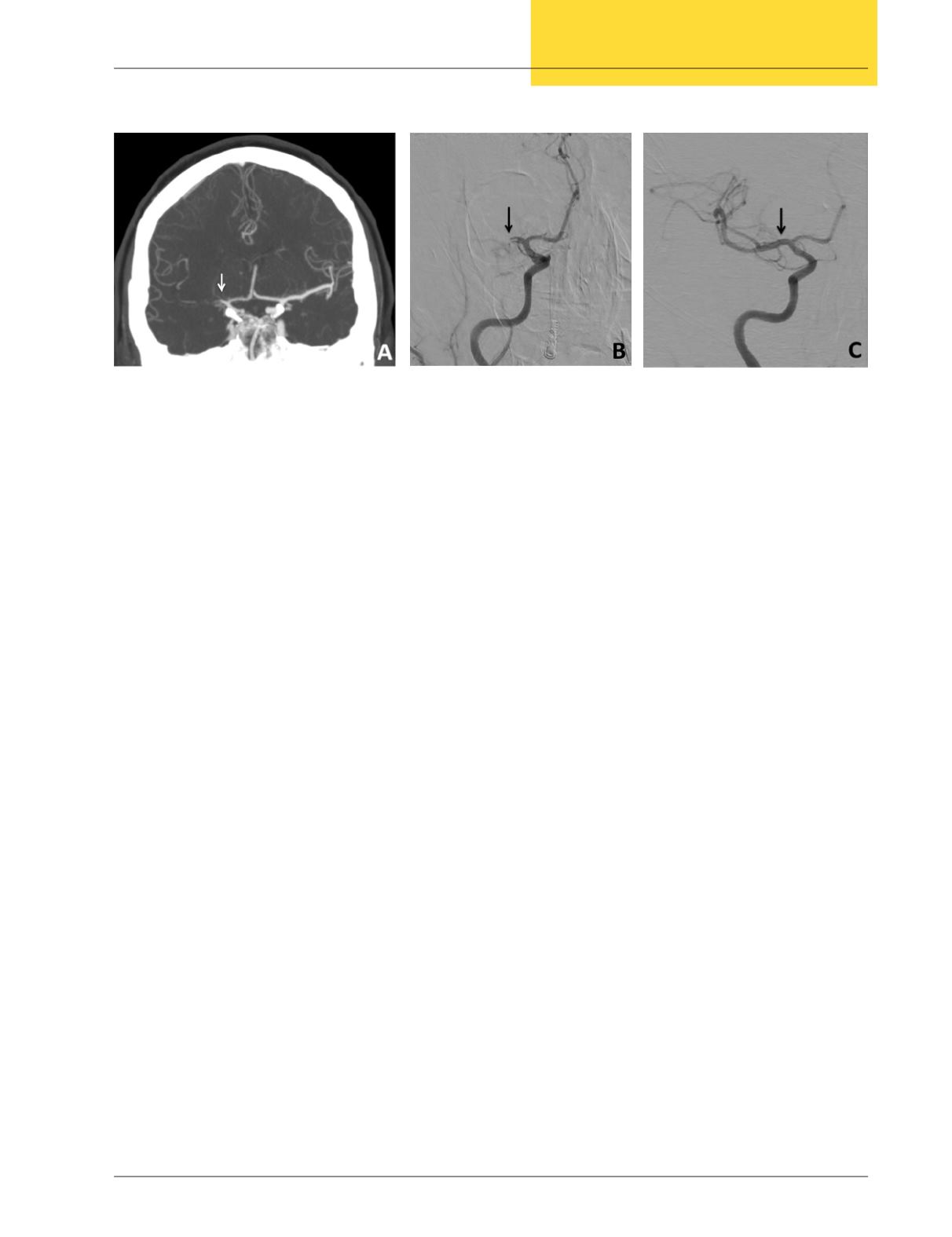
Northeast Florida Medicine
Vol. 66, No. 3 2015
45
Endovascular Neurosurgery
• Percentage of ischemic territory that underwent reperfu-
sion at 24 hours was greater in the endovascular therapy
group (median, 100 percent vs. 37 percent; P<0.001)
• Endovascular intervention increased early neurologic
improvement at three days (80 percent vs. 37 percent,
P=0.002) and improved functional outcome at 90 days
(mRS 0 to 2, 71 percent vs. 40 percent; P=0.01)
• No significant differences in mortality or symptomatic
intracranial hemorrhage
ESCAPE (EndovascularTreatment for Small Core and Anterior
Circulation Proximal Occlusionwith Emphasis onMinimizing
CT to Recanalization Times)
10
• Trial was stopped early because of efficacy of endovas-
cular therapy
• 316 patients were enrolled at 22 centers worldwide
• The rate of functional independence at 90 days (mRS
0 to 2) was increased after endovascular intervention
(53 percent vs. 29.3 percent; P<0.001)
• Endovascular therapy was associated with reduced
mortality (10.4 percent vs. 19 percent; P=0.04)
• No significant differences in symptomatic intracranial
hemorrhage (3.6 percent in the endovascular group vs.
2.7 percent in the medical group; P=0.75)
SWIFTPRIME (Solitaire with the Intention forThrombectomy
as Primary Endovascular Treatment)
11
• Trial was stopped early because of efficacy of endovas-
cular therapy
• 196 patients were enrolled at 38 centers
• The rate of functional independence (mRS 0 to 2) was
higher in the endovascular group (60 percent vs. 35
percent; P<0.001)
• No significant differences in 90-daymortality (9 percent
in the endovascular group vs. 12 percent in the medical
group; P=0.50)
• No significant differences in symptomatic intracranial
hemorrhage (0 percent in the endovascular group vs.
3 percent in the medical group; P=0.12)
REVASCAT (Randomized Trials of Revascularization with
Solitaire FRDevice versus BestMedicalTherapy in theTreatment
of Acute Stroke Due to an Anterior Circulation Large Vessel
Occlusion Presenting within Eight Hours of Symptom Onset)
12
• 206 patients enrolled in four centers in Spain
• The rate of functional independence at 90 days (mRS
0 to 2) was higher in the endovascular group (43.7
percent vs. 28.2 percent; adjusted odds ratio, 2.1; 95
percent confidence interval, 1.1 to 4.0)
• No significant differences in mortality (18.4 percent in
the endovascular group vs. 15.5 percent in the medical
group; P=0.60) or symptomatic intracranial hemorrhage
(1.9 percent in both groups)
Figure 2.
Panel A depicts a computed tomography angiography (CTA) demonstrating occlusion of the right middle cerebral
artery (white arrow) in a patient with acute focal neurological deficits. Panel B shows a cerebral angiogram after the patient was
taken to the neurointervention suite and demonstrates complete occlusion of the proximal right middle cerebral artery (black
arrow). Panel C shows a contrast run after mechanical thrombectomy and excellent recanalization of the artery (black arrow).


